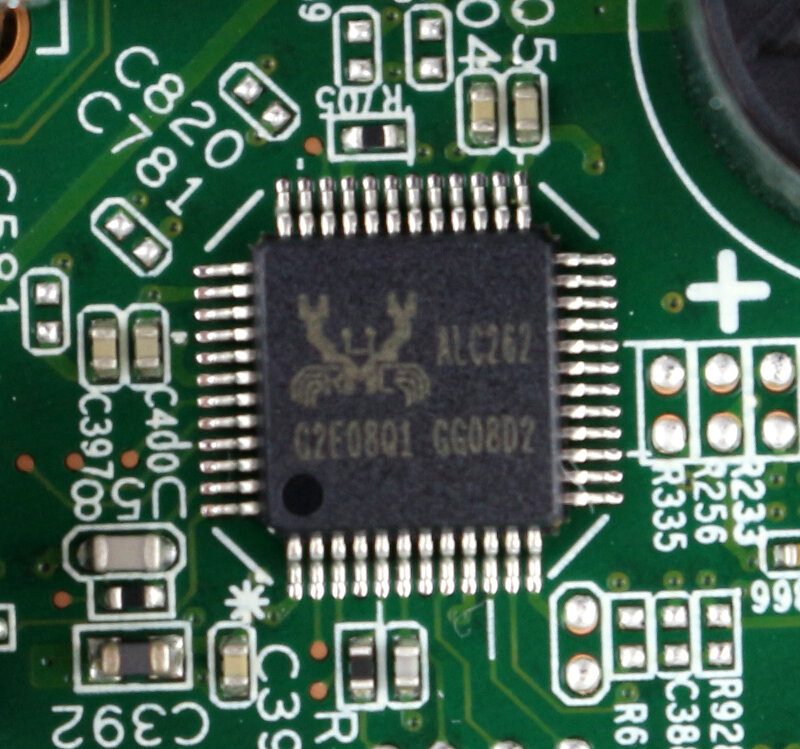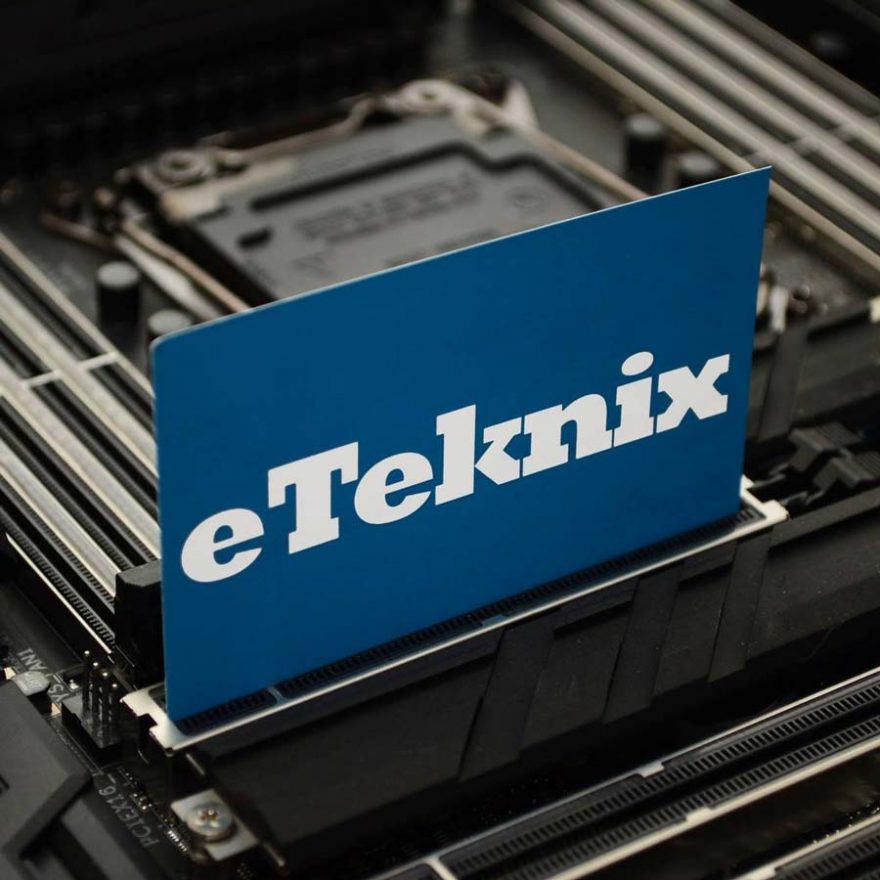Thecus N4810 4-Bay SMB and Enthusiast NAS Review
Bohs Hansen / 7 years ago
A Closer Look at the N4810
We’ve learned what the Thecus N4810 can do on the first page and now it is time to get a little bit closer acquainted with the NAS’ features and functions.
The included power supply can deliver up to 19 Volts at 4.47 Ampere. That equals out to about 85 Watts power capability. More than enough for this power efficient NAS.
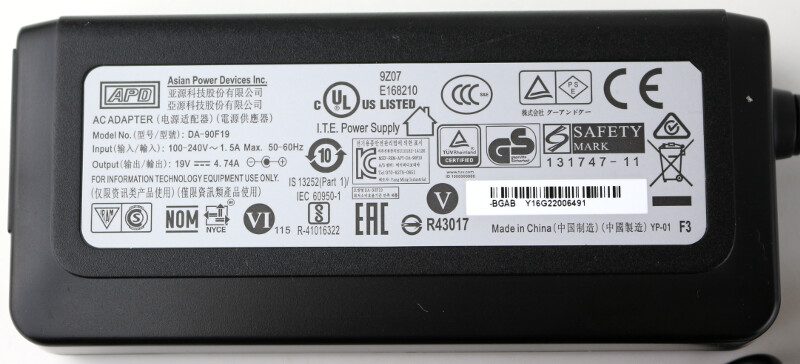
The removable drive bays support both 2.5-inch and 3.5-inch drives. They even feature a tool-less installation for 3.5-inch drives on the sides of the tray. And that’s in addition to the screw holes on the bottom of the tray.
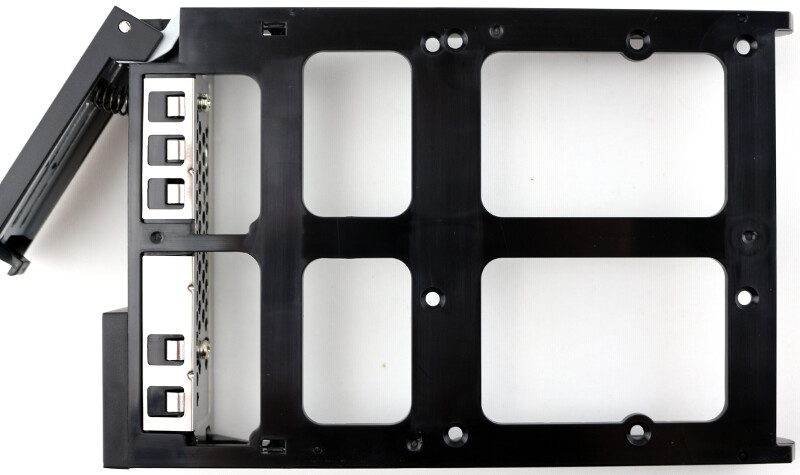
The IO panel on the rear side features all the connections. The LAN ports and market with a sticker rather than just imprints, and that’s a really nice feature. It makes it a lot easier to read which is which when you set it up. Next up is the SPDIF port for digital audio followed by two USB 3.0 Type-A ports and one USB 3.0 Type-C port.
HDMI is seen quite often on NAS devices these days and it is a lovely feature. Thecus went one up on that and also added a DisplayPort to the N4810. Nothing stands in the way of your 4K 60Hz viewing experience with these two connection options,

The front has several note worthy features where the first one to spot is the display at the top. It can provide a lot of information and also allows for some changes to be done directly from the display.
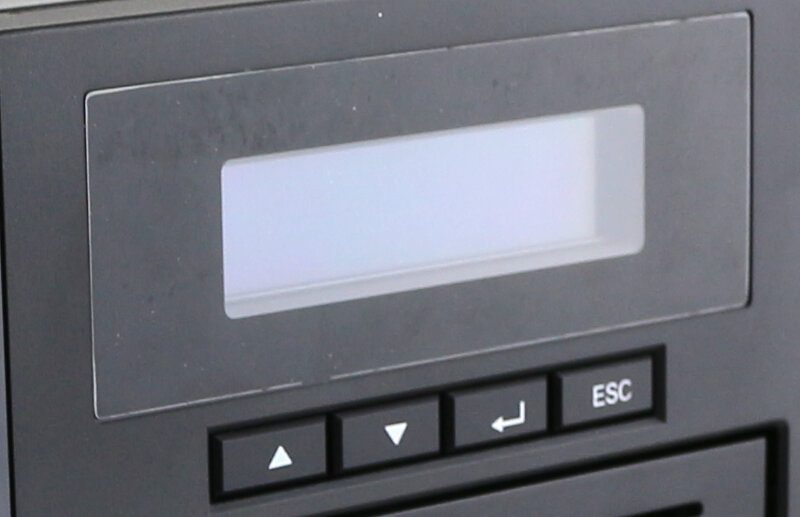
There’s a front USB 3.0 port further down, but no one-touch copy button. We also see the sturdy drive locks in this shot.
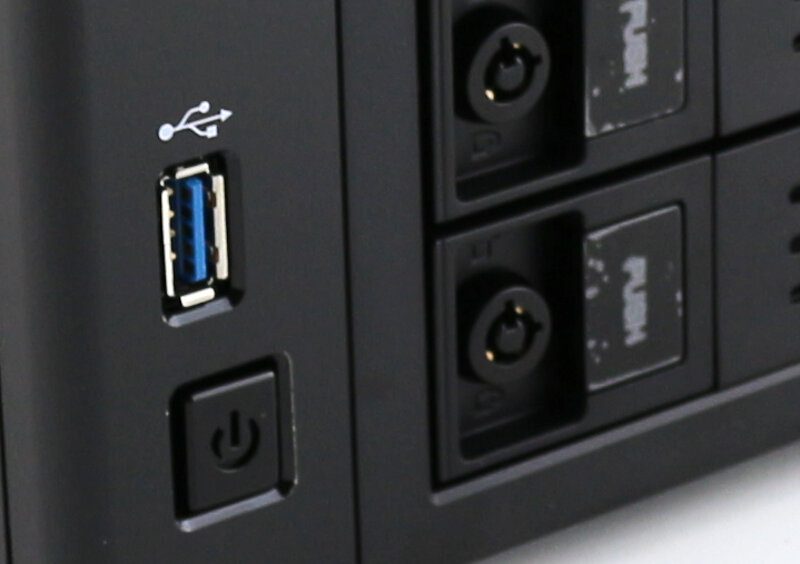
Removing the cover is easy, there are just three screws on the back of the NAS and once opened, we spot a hidden feature right away.
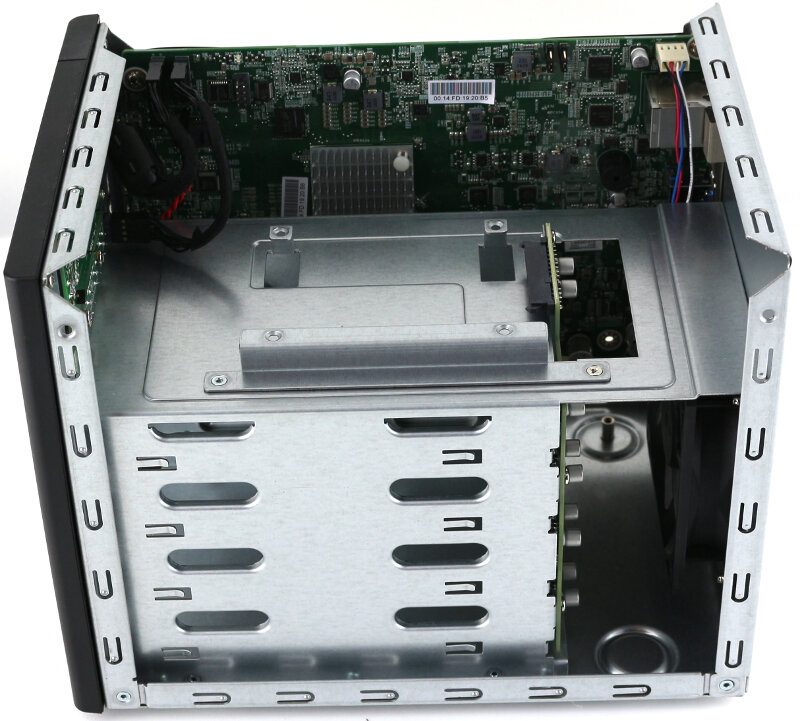
There is an extra SATA connection at the top of the unit and it appears to be fully connected to the system via the same backplane as the rest of the drives. This could be used for a SSD for caching purposes or just another 2.5-inch drive.
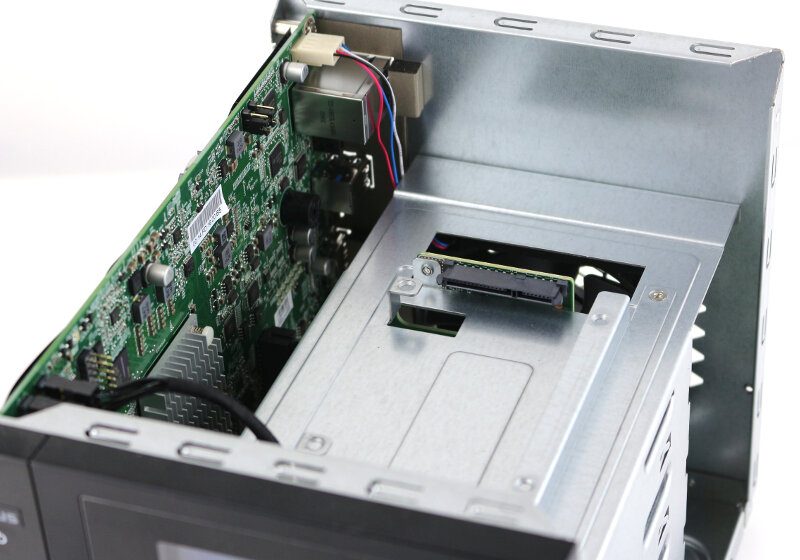
The front display and LEDs connect through various USB-based connectors.

The main reason that you’ll want to open up the NAS will be to upgrade the memory. There are 4GB pre-installed, but that doesn’t mean that adding another 4GB wouldn’t be nice. The pre-installed memory is in a single module which makes it run in a single-channel mode – something that has an impact on the performance. On the other hand, it makes the upgrade cheaper. You only need to get one new module instead of two.
Thecus also added the BIOS battery right here, allowing for easy replacement and it shows that Thecus built this unit to last many years before it will be retired for something newer.
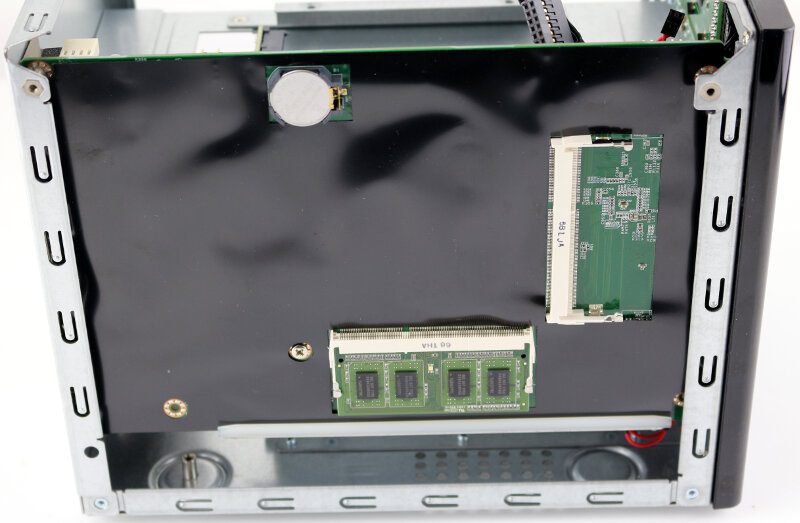
Normal users won’t need to take anything further apart, but I do. The bridge PCB for the storage drives is quite nice and well secured in the chassis.

Each connector’s power is stabilised by two capacitors.
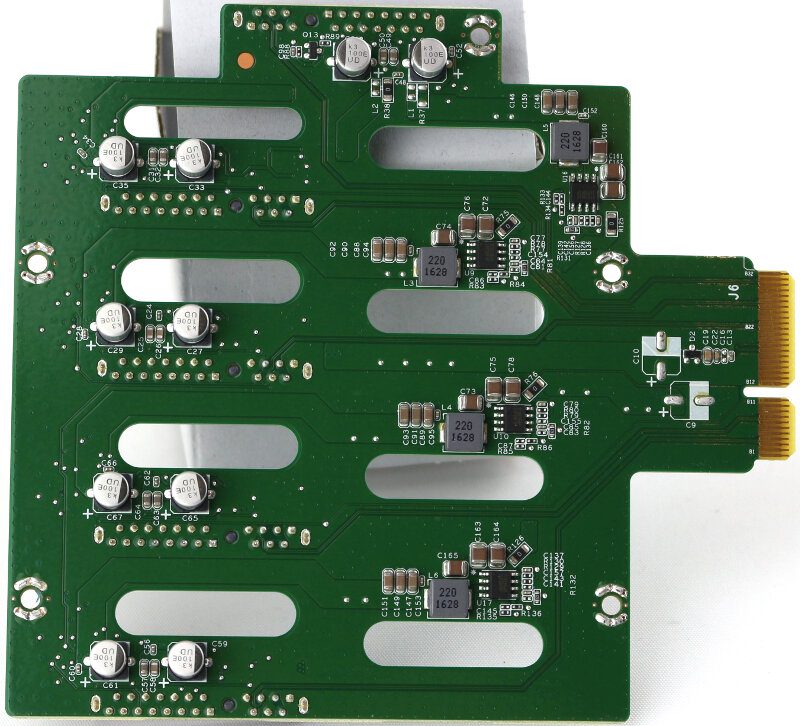
The PCB has a classic NAS design with a passive cooled CPU and all connectors distributed on the front and rear of it.
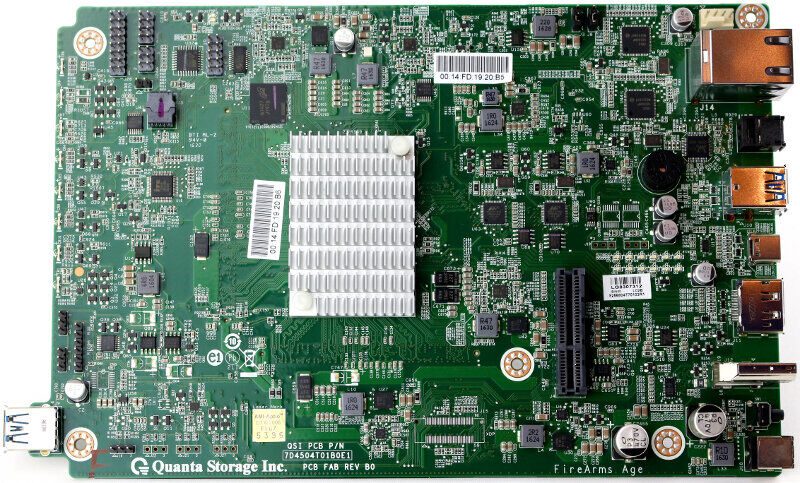
Moving in a little closer on the motherboard, we see a Micron memory chip right next to the motherboard.
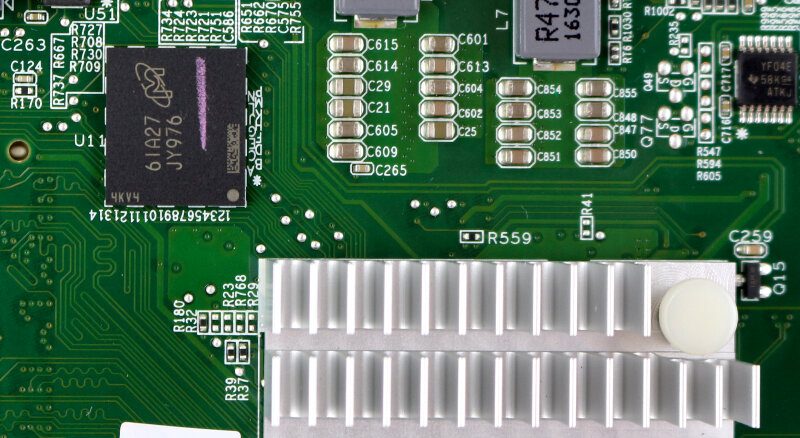
There are two Marvell 88SE9170 PCIe 2.0 to 6Gbps SATA I/O Host Controller.
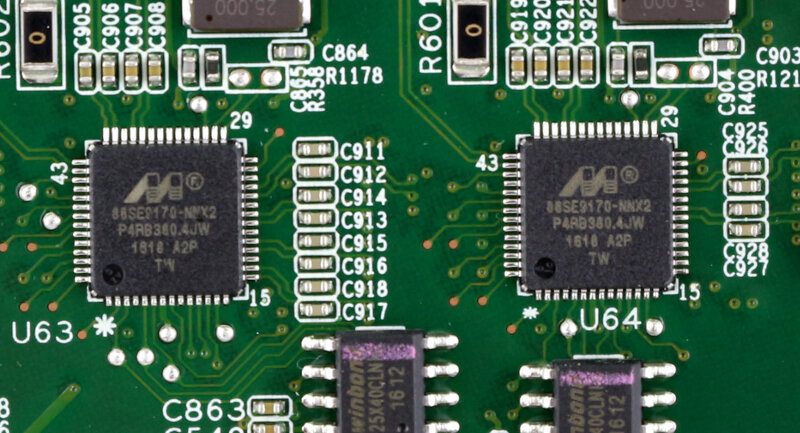
There also are two Intel i210AT network controllers
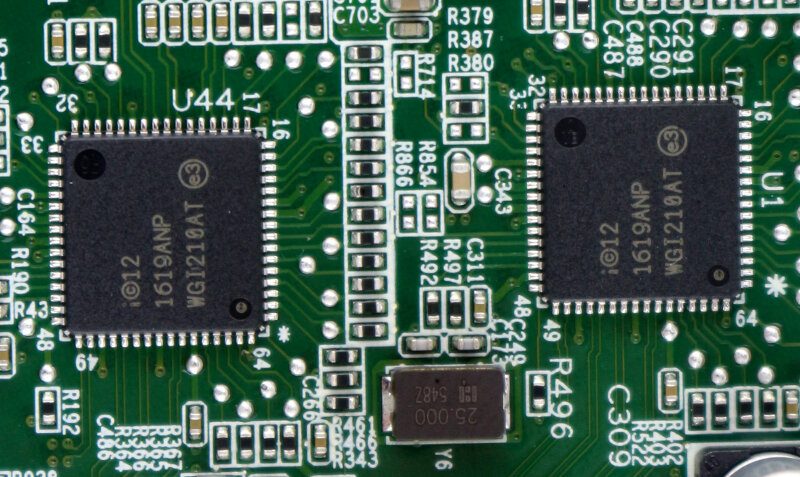
And there is a Realtek ALC262 4 channel DAC controller.
